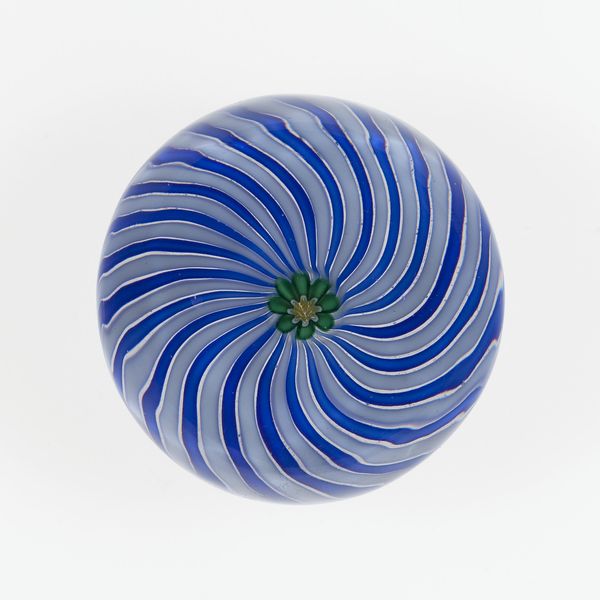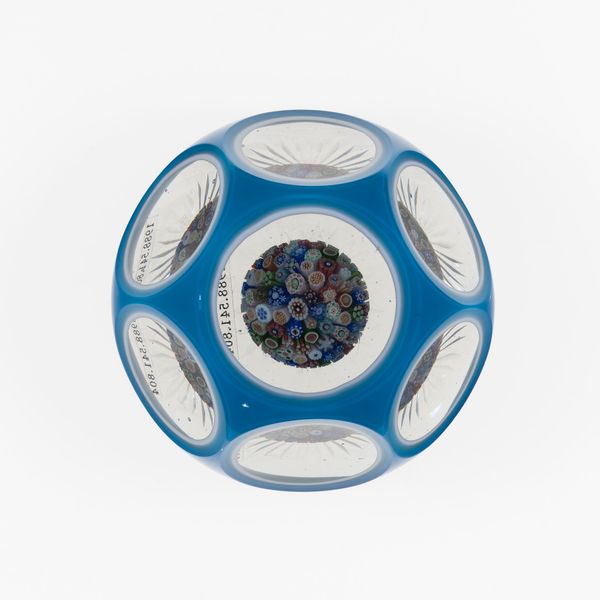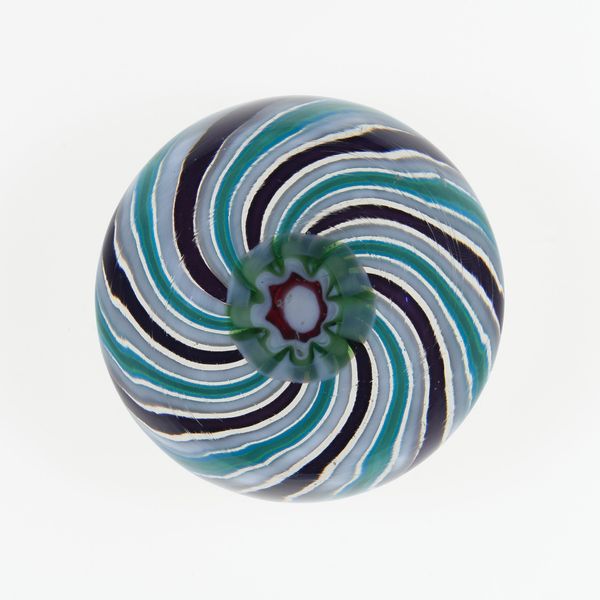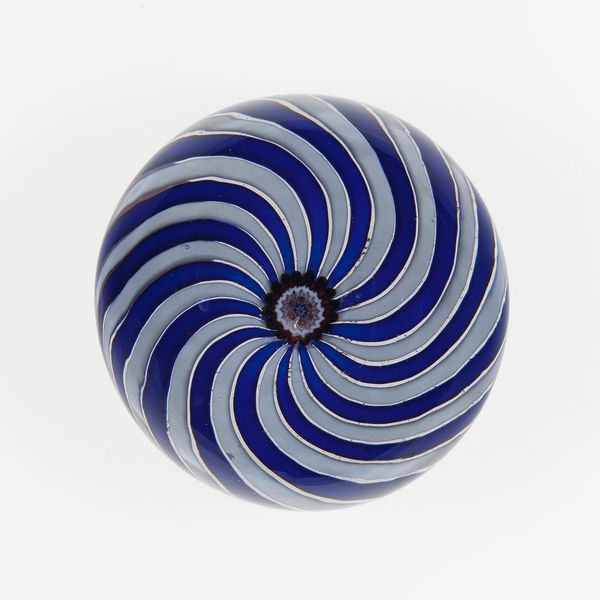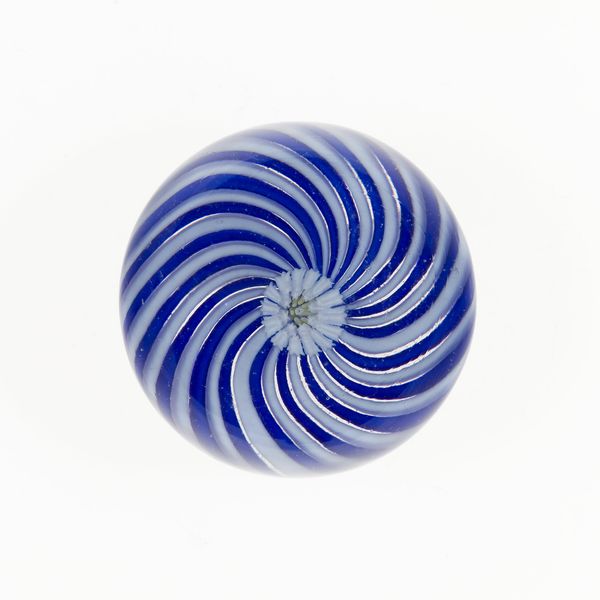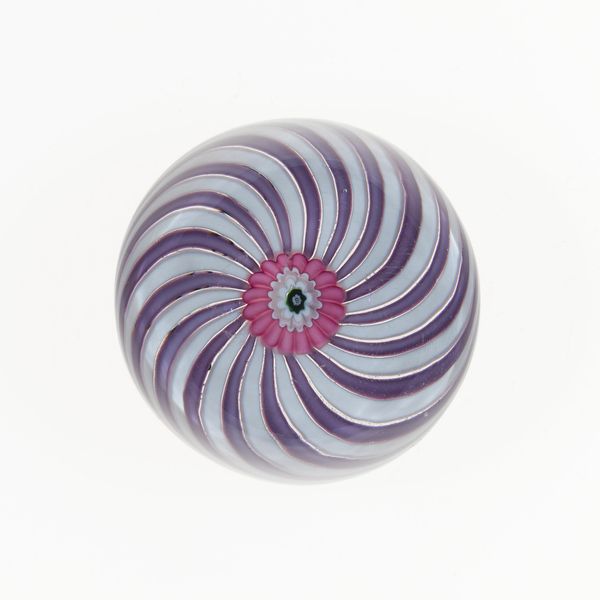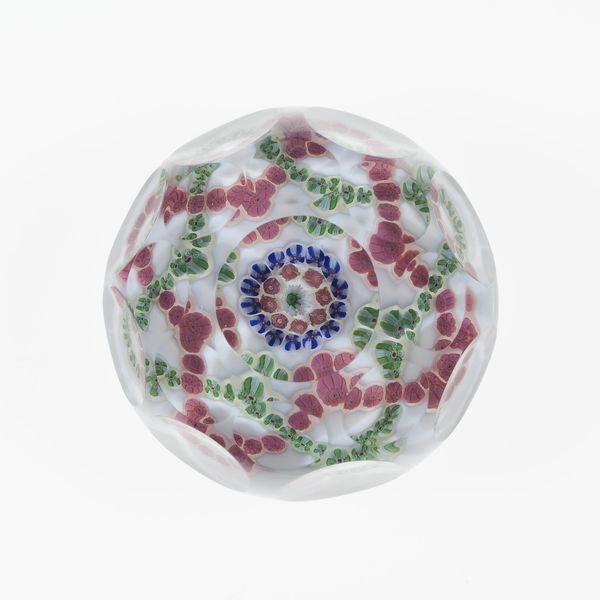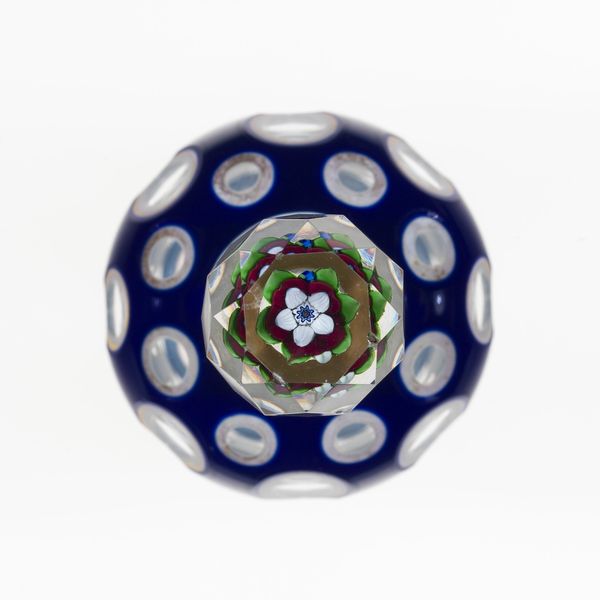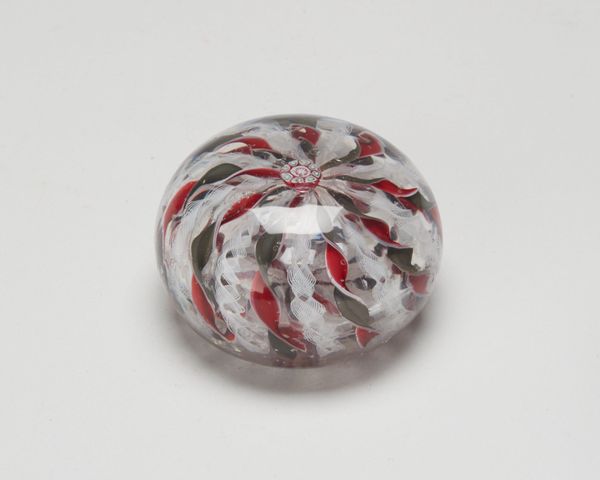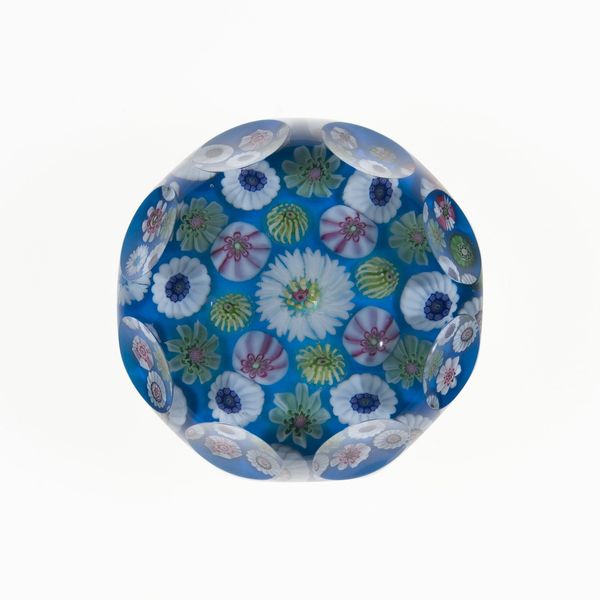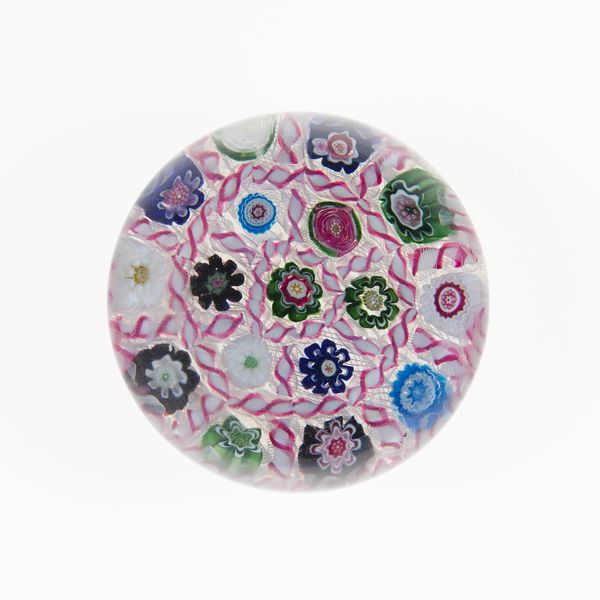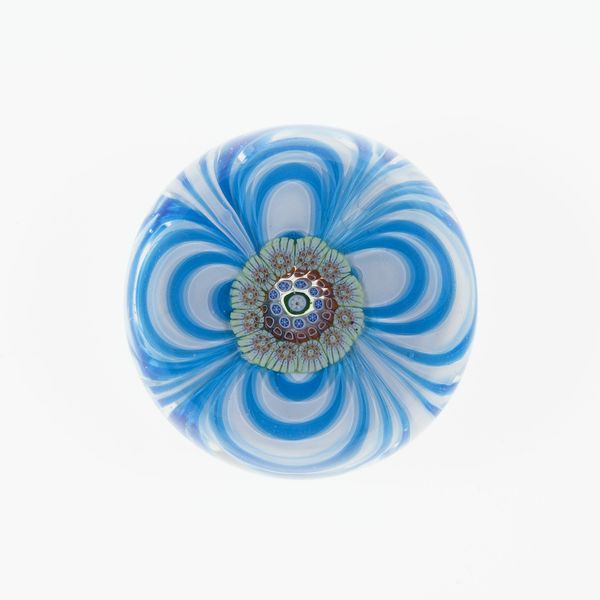
glass
#
glass
#
decorative-art
Dimensions: Diam. 7.8 cm (3 1/16 in.)
Copyright: Public Domain
The Clichy Glasshouse created this glass paperweight sometime between 1837 and 1885, a period of significant industrial growth in France. As a functional object, the paperweight reflects changing office culture, and the need to keep track of proliferating documents. Yet, it also became a luxury item for a growing middle class, something beautiful to display, and to collect. The flowers encased within the glass are intricate and delicate. It can be understood within a longer history of floral imagery in the decorative arts. Located in the northern suburbs of Paris, Clichy was one of several glasshouses creating these objects, so institutions shaped both the production and the reception of these works. We might also investigate the social dynamics of the factory itself. Who were the workers, and what were their working conditions? What kinds of skills were valued, and how were they passed down? By researching company records, census data, and period accounts, we can begin to understand the paperweight not just as a beautiful object, but as a product of its time.
Comments
No comments
Be the first to comment and join the conversation on the ultimate creative platform.

